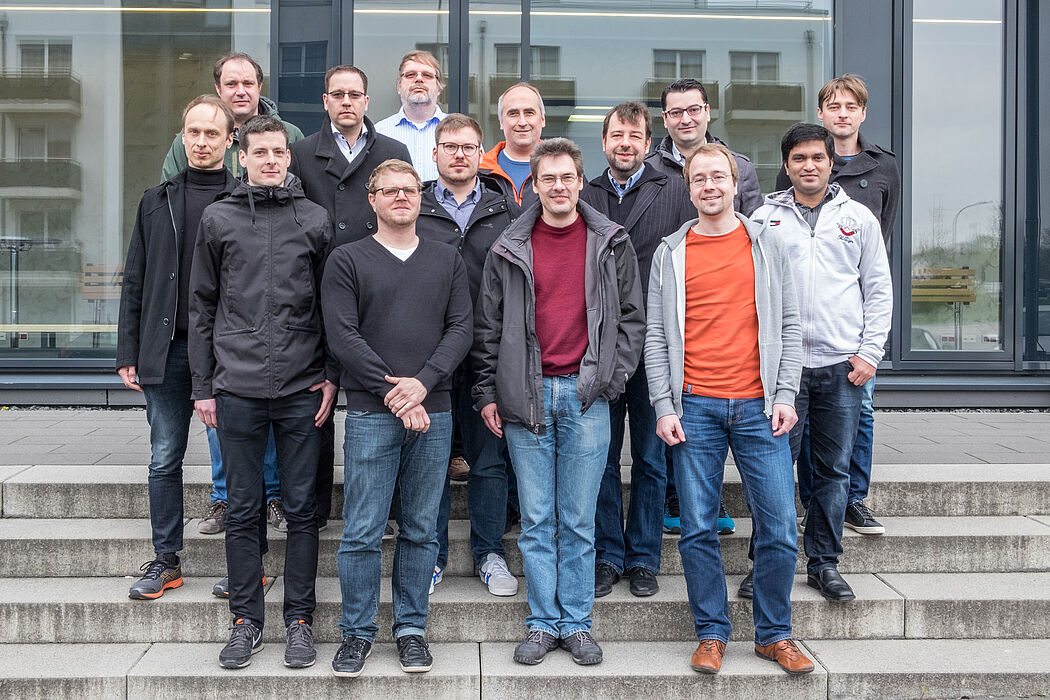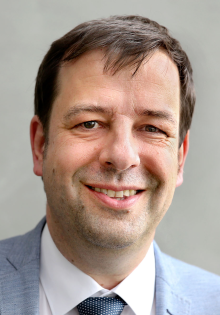Recently, a network of several German institutions from science and industry started the HPC project HighPerMeshes to tackle challenges associated with the efficient implementation of algorithms working on unstructured grids on heterogeneous processor architectures. At the kick-off meeting in April, organized by the Paderborn University, the status-quo of the relevant algorithms, the technological aspects and the requirements from the industrial and academic perspective were presented by the project partners.
The goal of the project is the development of a state-of-the-art domain-specific software framework to help scientists in the implementation of simulation codes working on unstructured grids. Innovations in the IT infrastructure comprising many-core and reconfigurable processing devices pose challenges to the software developers in both academia and industry to take advantage of new hardware features within their software designs - the hardware-software gap.
HighPerMeshes focuses on supporting efficient, parallel and scalable implementations of iterative algorithms on unstructured grids for heterogeneous computing platforms. Such algorithms are increasingly applied in academia and in the commercial sector, e.g., for Maxwell's equations, scattering problems, acoustics, or biomedical simulations, while extending or replacing traditional methods on regular grids.
By providing domain-specific constructs and library elements through C++ high-level abstraction, and complemented by a state-of-the-art compiler infrastructure, the HPC software developer will be enabled to generate performance optimized, parallel and scalable code for all major HPC processor architectures including multi-/many-core CPU, GPU and FPGA. The software framework developed within HighPerMeshes targets its applicability to complex real-world simulation packages like the Kaskade7 Finite Element Toolbox (ZIB, Berlin) or the implementation of the Discontinuous Galerkin Time Domain method of the research group of Prof. Dr. Jens Förstner (Paderborn University). We expect that our approach can provide an effective and sustainable solution for a variety of HPC software developers who are required to target high-end computing platfor
Background
The HighPerMeshes project started in April 2017 and will run until March 2020.
The primary project partners include
- the High-Performance IT Systems group (Prof. Dr. Christian Plessl) and Theoretical Electrical Engineering group (Prof. Dr. Jens Förstner) of the Paderborn University,
- the Architecture and Compiler Design group (Dr. Frank Hannig) at the Chair of Hardware/Software Co-Design (Prof. Dr. Jürgen Teich) of the Friedrich-Alexander University Erlangen-Nürnberg,
- the CC-HPC at Fraunhofer ITWM in Kaiserslautern (Dr. Daniel Grünewald), and
- the Numerical Mathematics Dept. (Dr. Martin Weiser) and the Algorithms for Innovative Architectures group (Dr. Thomas Steinke) at the Zuse Institute Berlin.
The associated partners
- CST - Computer Simulation Technology AG (now Dassault Systèmes) and
- Intel Deutschland GmbH
will contribute to the project with software requirements from the industrial perspective and expertise in the technological roadmap.
The project is funded by the German Federal Ministry of Education and Research with 1.6 Mio. €.
For more information see www.highpermeshes.info or contact Prof. Dr. Christian Plessl, Paderborn University.




